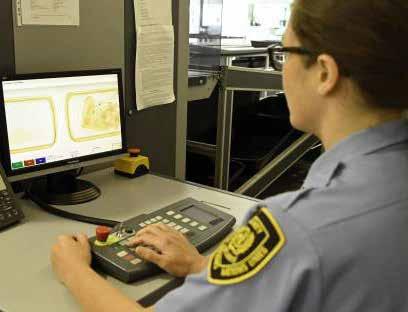
3 minute read
Climate-smart nuclear solutions for drought-struck Angolan cattle
By Zhu Liu
During southern Angola’s long dry season, water becomes scarce. The smallholders that make up 80 per cent of the region’s cattle owners are forced to frequently move their herds great distances to find available pastures. They maintain an extensive livestock rearing and production system that relies heavily on grazing on natural pastures — pastures at risk from weather variations and climate change.
This year, the country’s southern provinces are experiencing a fifth consecutive year of drought, killing livestock, decimating crops and affecting some 1.6 million people. The drought and worsening climate conditions, described by the International Federation of Red Cross and Red Crescent Societies as the most damaging in 40 years, are catastrophic for pastures and the smallholders’ cattle production, impacting farmer’s livelihoods and the country’s food security.
“To help Angola and smallholders adapt to all these weather and climatic variations and changes, we need smarter solutions,” said Joaquim Ipanga Nganza from Angola’s Veterinary Research Institute. Nganza is working with the IAEA and Food and Agriculture Organization of the United Nations (FAO) on a two-year IAEA technical cooperation project to develop a climatesmart pasture management system using nuclear and related technologies.
“Improving our knowledge on the nutritive value of pastures and the nutritional status of cattle can help. In the process, we can help mitigate the effects of climatic variations and climate change and reduce the impact on the environment caused by overgrazing and degradation,” Nganza said.
With FAO–IAEA assistance, Angola is establishing an animal nutrition laboratory and is evaluating the diet of cattle and the nutritive value of available pastures. The study will help identify a selection of nutritious grasses for multiplication and dissemination, as well as for livestock feed supplementation and ration formulation.
“Nuclear and related techniques offer substantial advantages over conventional techniques, and could help us to design a balanced diet for cattle with a mix of natural pastures and feed supplements. This can enhance cattle productivity and set a foundation for climate-smart agriculture in Angola,” said Victor Tsuma, the project leader and a livestock reproductionist from the Joint FAO/IAEA Centre of Nuclear Techniques in Food and Agriculture. He explained how the project will use stable carbon isotopic techniques and near infrared reflectance spectroscopy (NIRS) to identify the nutritive value of local pastures consumed by cattle.
Tracing stable isotopes to save pastures
Stable isotopes are non-radioactive forms of atoms, which can be used in a broad variety of applications and assessments. Under grazing conditions, scientists can measure stable isotope concentrations in plants eaten by animals and compare them to what is found in faecal samples to determine which types of pastures are eaten by the cattle.
Using this stable carbon isotope tracer technique, NIRS can predict cattle’s dry matter intake and develop a plant profile of that intake. NIRS is a rapid and non-destructive technique widely used in agriculture and can help Angolan scientists analyse the nutrient content of the pastures.
“Data from infrared reflectance spectroscopy can help in recommending a set of supplements, such as minerals and vitamins, to incorporate into the cattle’s diet to cover the nutritional needs,” said Tsuma, explaining that the farmers could partially or completely replace conventional animal feeds with more innovative practices using local resources, directly impacting productivity while protecting the environment and conserving natural resources.
Integrated, holistic and community-based approaches have been found to support a sustainable increase in animal production. Mixed crop-livestock systems produce about half of the world’s food. In such systems, the output of one process becomes the input of another, and there is minimum nutrient leakage to the environment, for example, in the form of greenhouse gas emissions.
Nuclear Saves supports climate solutions
In June 2021, the ‘Nuclear Saves’ partnerships initiative was launched to provide an opportunity for companies and organizations to support the IAEA in transferring nuclear science and technology to developing countries, with a view to improving the health and prosperity of millions of people around the world. Through the partnerships, the IAEA is uniting the best of global science, technology and human ingenuity to help countries address some of the world’s most pressing challenges. Funds from the partnerships enable the IAEA to accelerate the peaceful uses of nuclear energy for cancer diagnosis and treatment; the prevention and control of zoonotic diseases; and climate change adaptation and mitigation, as well as the transition to clean energy.
The IAEA is looking for more partners to join the initiative. To join and for more information, contact partnerships@iaea.org.
“Nuclear and related techniques offer substantial advantages over conventional techniques, and could help us to design a balanced diet for cattle with a mix of natural pastures and feed supplements. This can enhance cattle productivity and set a foundation for climate-smart agriculture in Angola,”
— Victor Tsuma, FAO/IAEA Livestock Reproductionist
Morocco’s National Centre for Nuclear Energy, Sciences and Technology (CNESTEN) plays a leading role in the application of isotope techniques across Africa and the Middle East.






